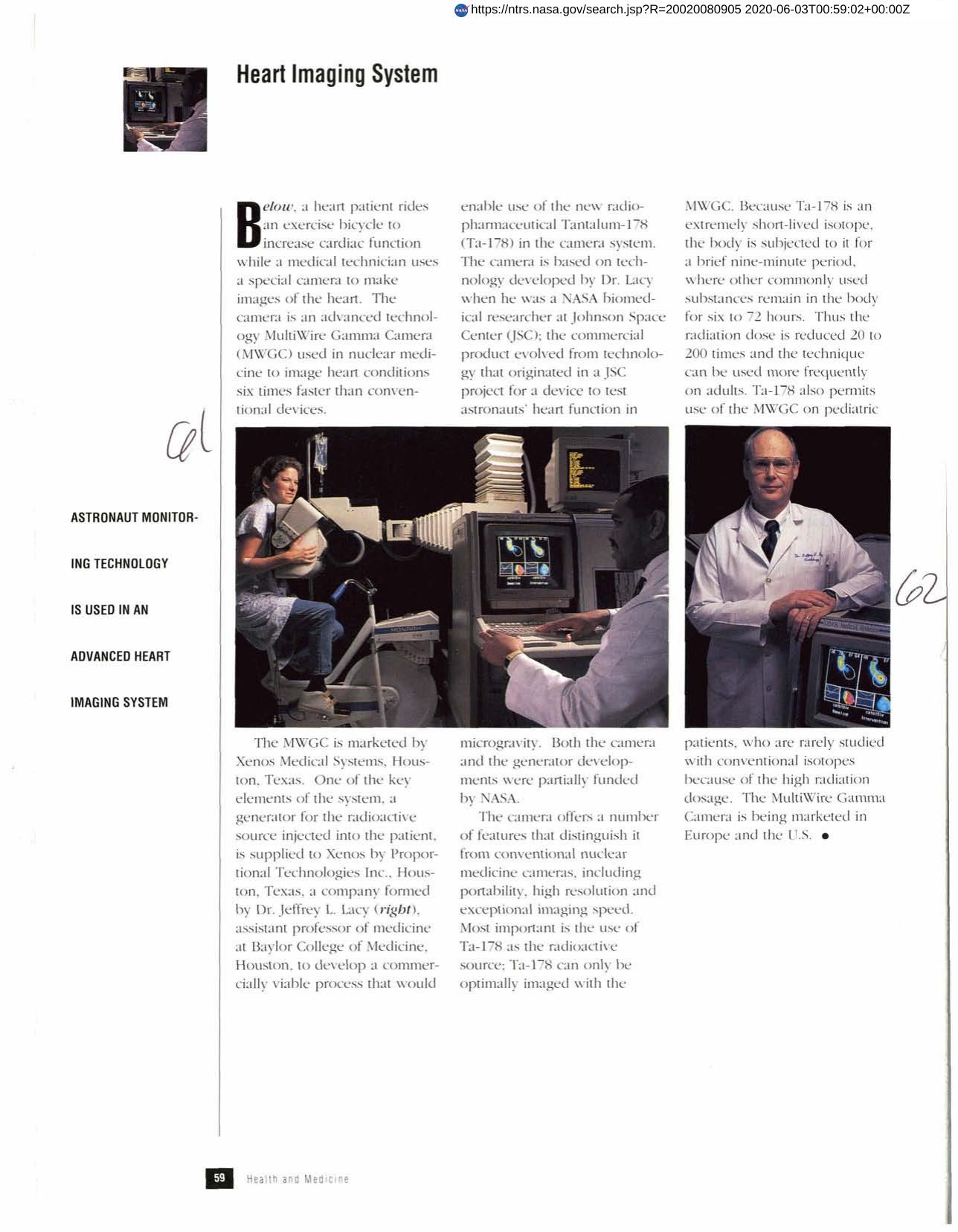
Heart Imaging System
Johnson Space Flight Center's device to test astronauts' heart function in microgravity has led to the MultiWire Gamma Camera, which images heart conditions six times faster than conventional devices. Dr. Jeffrey Lacy, who developed the technology as a NASA researcher, later formed Proportional Technologies, Inc. to develop a commercially viable process that would enable use of Tantalum-178 (Ta-178), a radio-pharmaceutical. His company supplies the generator for the radioactive Ta-178 to Xenos Medical Systems, which markets the camera. Ta-178 can only be optimally imaged with the camera. Because the body is subjected to it for only nine minutes, the radiation dose is significantly reduced and the technique can be used more frequently. Ta-178 also enables the camera to be used on pediatric patients who are rarely studied with conventional isotopes because of the high radiation dosage.
Full article: http://hdl.handle.net/hdl:2060/20020080905

Heart Imaging System

Heart Imaging System













